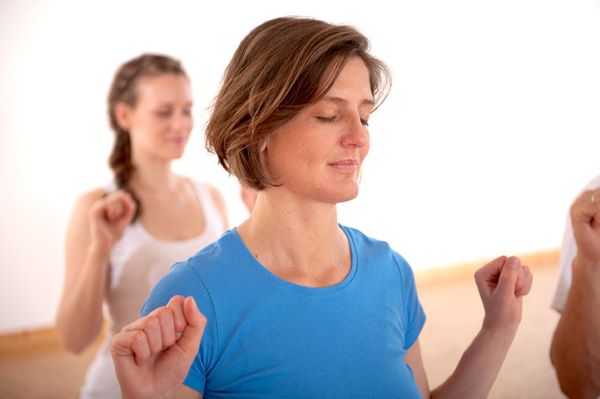Yoga, an ancient practice from India, integrates physical postures, breath control, and meditation to enhance overall well-being. Bhastrika Pranayama, also known as Bellows Breath in English, is a powerful breathing technique that energizes the body and mind. This article explores Bhastrika Pranayama, covering its history, practice steps, health benefits, and precautions.
What is Bhastrika Pranayama?
Bhastrika Pranayama, or Bellows Breath, is a pranayama technique characterized by rapid, forceful inhalation and exhalation, mimicking the action of a bellows. The name “Bhastrika” comes from the Sanskrit word for “bellows,” reflecting the dynamic movement of the breath in this practice. Bhastrika Pranayama invigorates the body, clears the mind, and balances the nervous system.
Also, watch web stories: 5 Yoga Poses to Manage Hypertension
A Brief History of Bhastrika Pranayama
Bhastrika Pranayama has its roots in ancient yogic traditions and is mentioned in classical texts such as the “Hatha Yoga Pradipika.” Historically, it has been used by yogis to increase their energy levels, clear the respiratory system, and prepare for deeper meditation. Its invigorating effects make it a valued practice in various yoga traditions.
How to Do Bhastrika Pranayama: Step-by-Step Instructions
Performing Bhastrika Pranayama involves a series of steps focusing on vigorous inhalation and exhalation:
- Preparation:
- Sit comfortably in a cross-legged position such as Sukhasana (Easy Pose) or Padmasana (Lotus Pose).
- Keep your spine straight, shoulders relaxed, and hands resting on your knees. Close your eyes and take a few deep breaths to settle into the practice.
- Starting the Breath:
- Begin with a deep inhalation through your nose, expanding your lungs fully.
- Exhale forcefully through your nose, contracting your abdominal muscles.
- Vigorous Breathing:
- Continue with rapid, forceful inhalations and exhalations through your nose, using your diaphragm to pump the air in and out. The movement should be brisk and rhythmic, similar to the action of a bellows.
- Perform this cycle for about 20-30 breaths.
- Resting Period:
- After completing a cycle, take a deep breath in and hold it for a few seconds.
- Exhale slowly and return to normal breathing. Rest for a few moments before starting the next cycle.
- Repeat the Cycle:
- Repeat the cycle of 20-30 breaths, followed by a resting period, for 3-5 rounds.
Health Benefits of Bhastrika Pranayama
It offers numerous health benefits, including:
- Increases Energy Levels:
- Energizes the body and mind, providing a boost of vitality. (Source)
- Clears the Respiratory System:
- Improves lung capacity and clears the respiratory passages by expelling stale air and toxins. (Source)
- Enhances Circulation:
- Stimulates blood circulation, promoting better oxygenation of the body.
- Balances the Nervous System:
- Helps balance the sympathetic and parasympathetic nervous systems, promoting overall mental clarity and emotional stability. (Source)
- Improves Digestion:
- Stimulates the digestive system, aiding in better digestion and metabolism.
Who Should Do Bhastrika Pranayama
It is beneficial for:
- Individuals seeking to increase their energy levels and vitality.
- Those looking to improve respiratory health and clear the respiratory passages.
- People aim to enhance blood circulation and oxygenation.
- Practitioners want to balance their nervous system and improve mental clarity.
- Individuals looking to stimulate their digestive system.
Who Should Not Do Bhastrika Pranayama
It may not be suitable for:
- Individuals with high blood pressure or heart conditions should avoid this practice without professional guidance.
- Those with respiratory disorders such as asthma or chronic obstructive pulmonary disease (COPD) should practice with caution.
- People with hernias, ulcers, or recent abdominal surgery should avoid vigorous breathing exercises.
- Pregnant women should avoid this practice.
Precautions to Take
- Practice Bhastrika Pranayama on an empty stomach or at least 2-3 hours after a meal.
- Maintain a comfortable and steady pace; avoid straining or forcing your breath.
- Consult with a healthcare provider or experienced yoga instructor if you have any underlying health conditions.
- If you feel dizzy, lightheaded, or uncomfortable, stop the practice and return to normal breathing.
References and Sources
In conclusion, Bhastrika Pranayama is a powerful and invigorating pranayama technique that offers extensive physical and mental benefits. By understanding its history, learning the proper technique, and adhering to precautions, you can safely incorporate Bhastrika Pranayama into your yoga practice to enhance your overall well-being.





